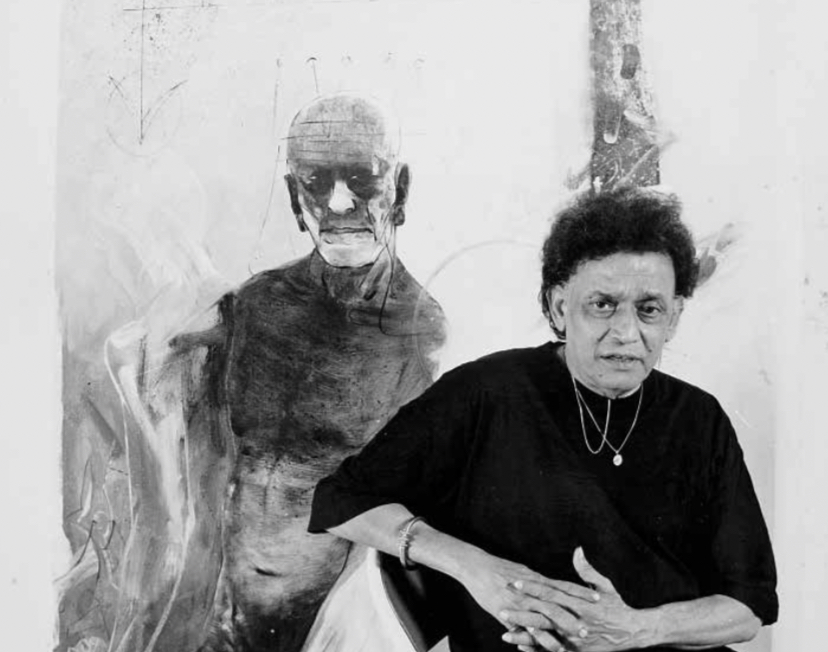Born in Kolkata in 1939, Sunil Das was an Indian expressionist painter. Coming from a middle-class family, Das decided to be a painter early on in life and refused to join his family business. He enrolled in the Government College of Art and Craft, Calcutta in 1955 and later won a French Government Scholarship to study at the École des Beaux-Arts in Paris. A student of remarkable intellect, Sunil Das has the distinction of being the only Indian artist to have won a National Award (the Shiromani Kala Puraskar) while still an undergraduate. In 2014, he was conferred with the Padma Shri Award by the Government of India. He also served as the director and advisor in the Ministry of Textiles. Das passed away in 2015 but over his exceptional career conducted around 88 solo exhibitions across the world including the Paris Biennale.
One of India’s important post-modernist painters, Das experimented with and was unique in his skill and command over several mediums and techniques across his career. Not confining himself to using brush or pen, he often painted with the palm of his hands or with his fingers, however, his signature style involved using charcoal on paper. Unlike other artists, Das never allowed the medium to take hold of his creative practice. He said, “I believe that if you are honest and confident, you can mould and control anything. Any medium or surface, no matter what. It’s the same principle. In my case I don’t allow the medium to control me, I take control of it.”
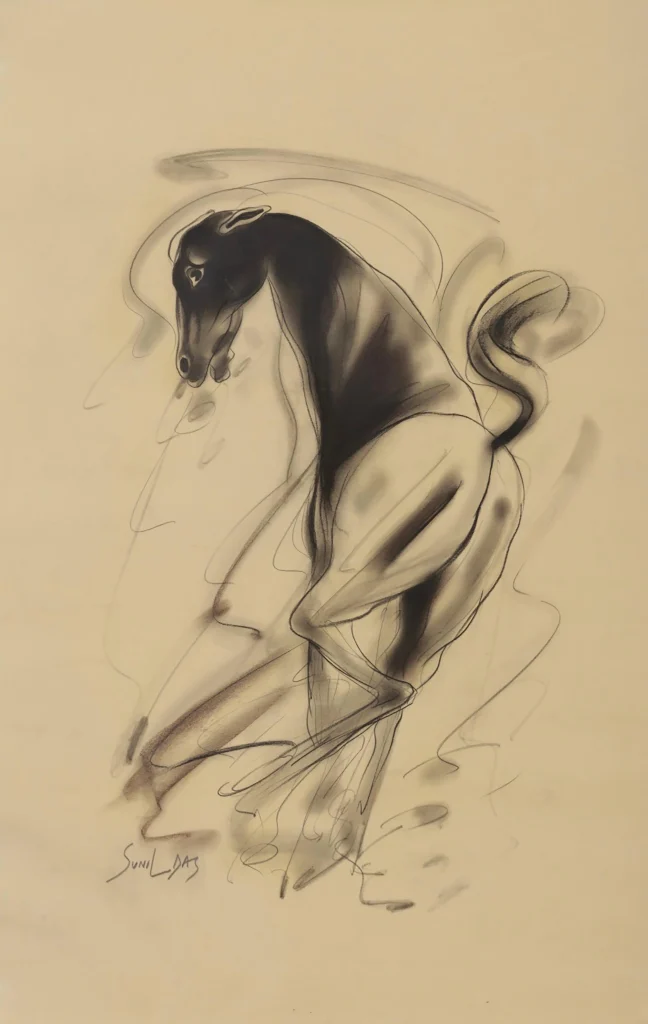
Galloping Horse. Charcoal on paper. Courtesy of Invaluable.
Das rose to prominence with his captivating drawings of horses and bulls. Once on his way to a station to observe and paint in Calcutta during his period as a student, he chanced upon mounted police’s horses and was immediately struck by the animal’s physical beauty and grace. Following this, Das spent countless hours every day at the mounted police stable observing the horses and producing paintings. This preoccupation with the horse as a subject verged on obsession since he produced 7000 paintings between 1950 and 1960 depicting horses. Similarly, later on his scholarship with the Ecole Nationale Superieure des Beaux-Arts took him to Europe when during his visit to Spain he encountered a bull fight which fostered his fascination for the beast leading to numerous paintings.
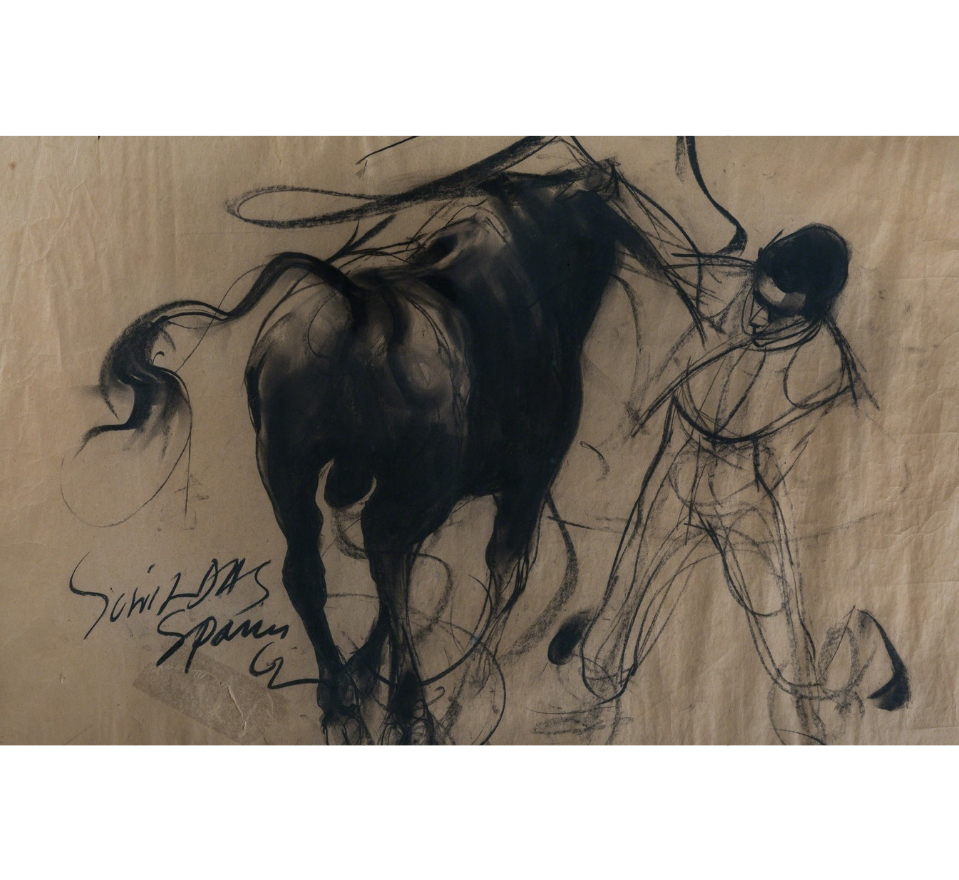
Das was inspired by the force and strength of the moving horse and bull which he tried to communicate through his paintings. For instance, in his work titled Galloping Horses, his swift gestures with a piece of charcoal on paper try to bring to life the lively gracefulness of the horse and replicate a sense of motion through the incomplete curvaceous strokes. To the viewer, the horse appears almost on the verge of disappearance giving the figure a spectral countenance. On the other hand, the painting titled Spain displays a striking intensity with the magnificent portrayal of the bull whose strength achieves pronounced visibility given its juxtaposition against the uncoloured and seemingly hollow bullfighter.
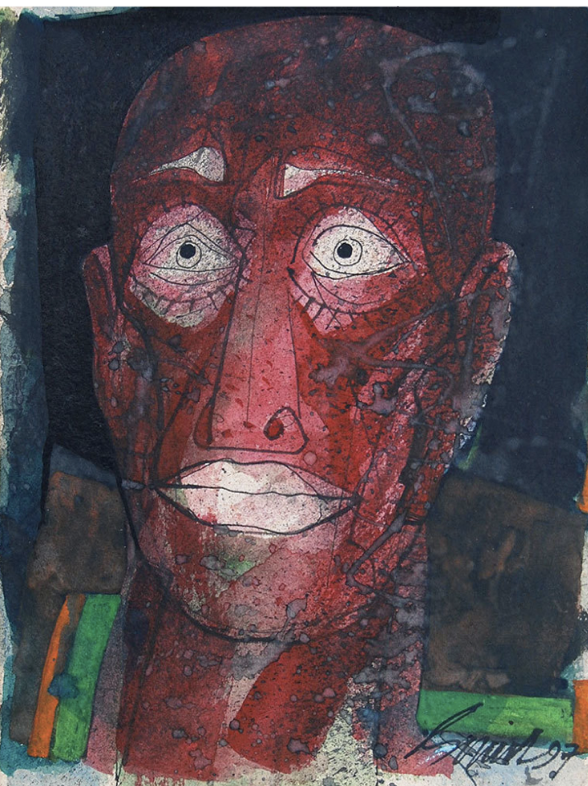
However, in popular perception Das’s artistic career has been reduced to these two subjects overshadowing his immense body of work which also included studies of human figures, still life, landscapes, and abstract paintings. His paintings of human figures – for example, the above macabre painting from the Head series -have often been characterized to carry a surrealist influence. He denies the claims remarking that: “It has never been a conscious effort with me…The third person can interpret anything, depending on what they feel and think.”
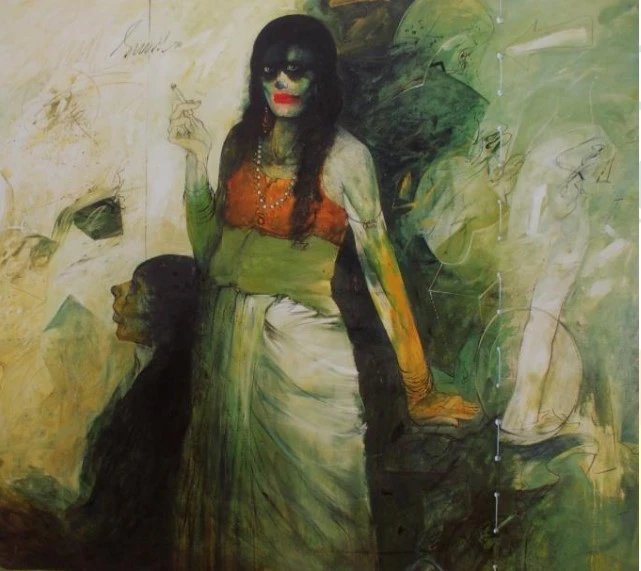
Das was an artist who understood his responsibility towards the masses. He said, “From the day people begun to see me as a painter, a huge responsibility fell upon me, particularly to respond to the feelings of the people at the grassroots level who are also my viewer, as also to delve deep into realities of life around me.” This sense of responsibility is distinctly visible in his paintings of prostitute women that capture their oppression and silence. Anunch tries to depict the wretched situation and lived spaces of prostitutes using dark, gloomy colours and chaotic brush strokes with a mysterious background. The faces and postures of these women tell a complex story. The woman figure standing with a cigarette in hand and ghastly appearance – an image that recurs almost in all his women paintings – matches the gaze of the viewer. Her face and posture exhibiting a sense of composure and dignity which is juxtaposed against the dejected figure of the other woman staring right ahead. The painting invites the viewer to imagine and enter the horrifying realities of these women.
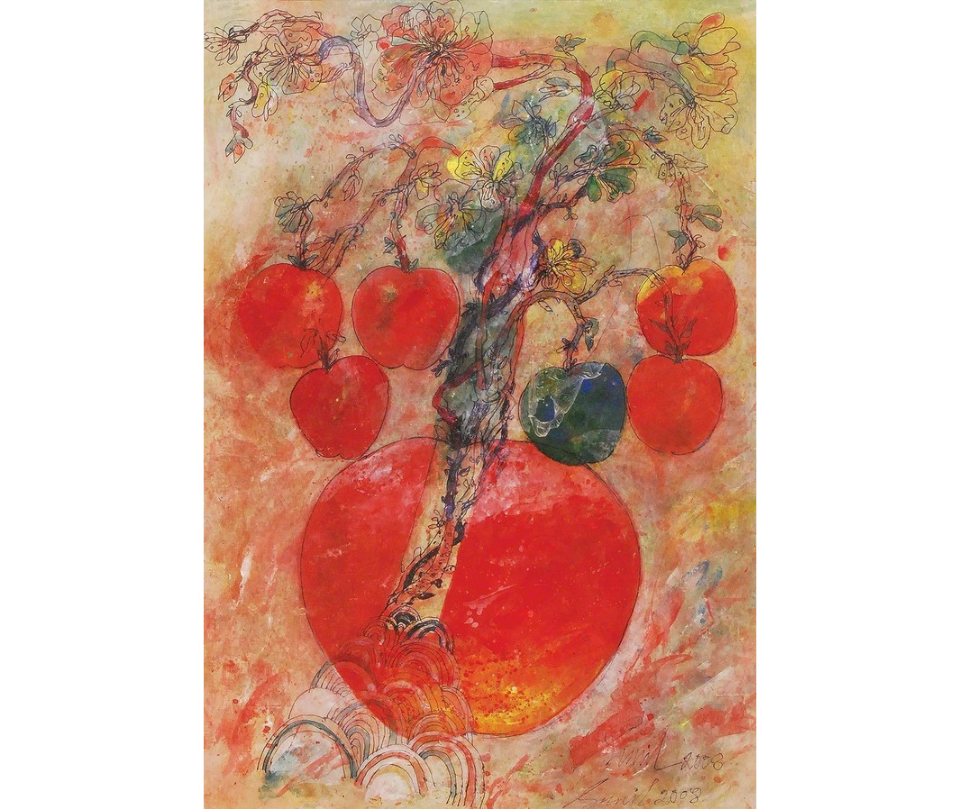
Das was an intellectual with an interesting philosophy of painting. Every painting of his was an expression of what he had been thinking and experiencing at the time of its production which allows him to view his paintings as extensions of his own self. “They are my body. That’s why I tend to name all of them either Sunil 1, 2, 3 or Self. All my work comes through me, so the self is a very important presence in the works. I maybe a still life, a landscape or even a horse. Everything I do is only a transformation of myself. Even the media and surface I choose, whether napkins, brushes or my own hand, depends on my mood and the moment. Everything becomes a self-portrait, reflecting my surroundings and my feelings.”
F.N.Souza once wrote about Sunil Das in 1985 saying, “Sunil Das is a painter of tomorrow working today.” Maybe Souza was pointing to the postmodernist dimensions of Das’s work that are yet to be explored. A prolific artist with a talent for commanding any medium and subject, it is high time that the critics and spectators revisit the artistic world of Sunil Das.
References
- https://www.indiatoday.in/fyi/story/sunil-das-death-post-modern-artist-kolkatta-horses-bull-287472-2015-08-10
- https://indianexpress.com/article/lifestyle/drawn-to-perfection/
- https://web.archive.org/web/20070807092543/http://www.hinduonnet.com/thehindu/mp/2006/01/14/stories/2006011402310500.htm
- https://timesofindia.indiatimes.com/city/kolkata/artist-sunil-das-one-of-the-greats-dies/articleshow/48430657.cms
- https://www.sunildas.net/about-us/
- https://www.saffronart.com/artists/sunil–das
- https://www.artshoppy.com/blog/post/sunil-das-the-maverick-genius.html
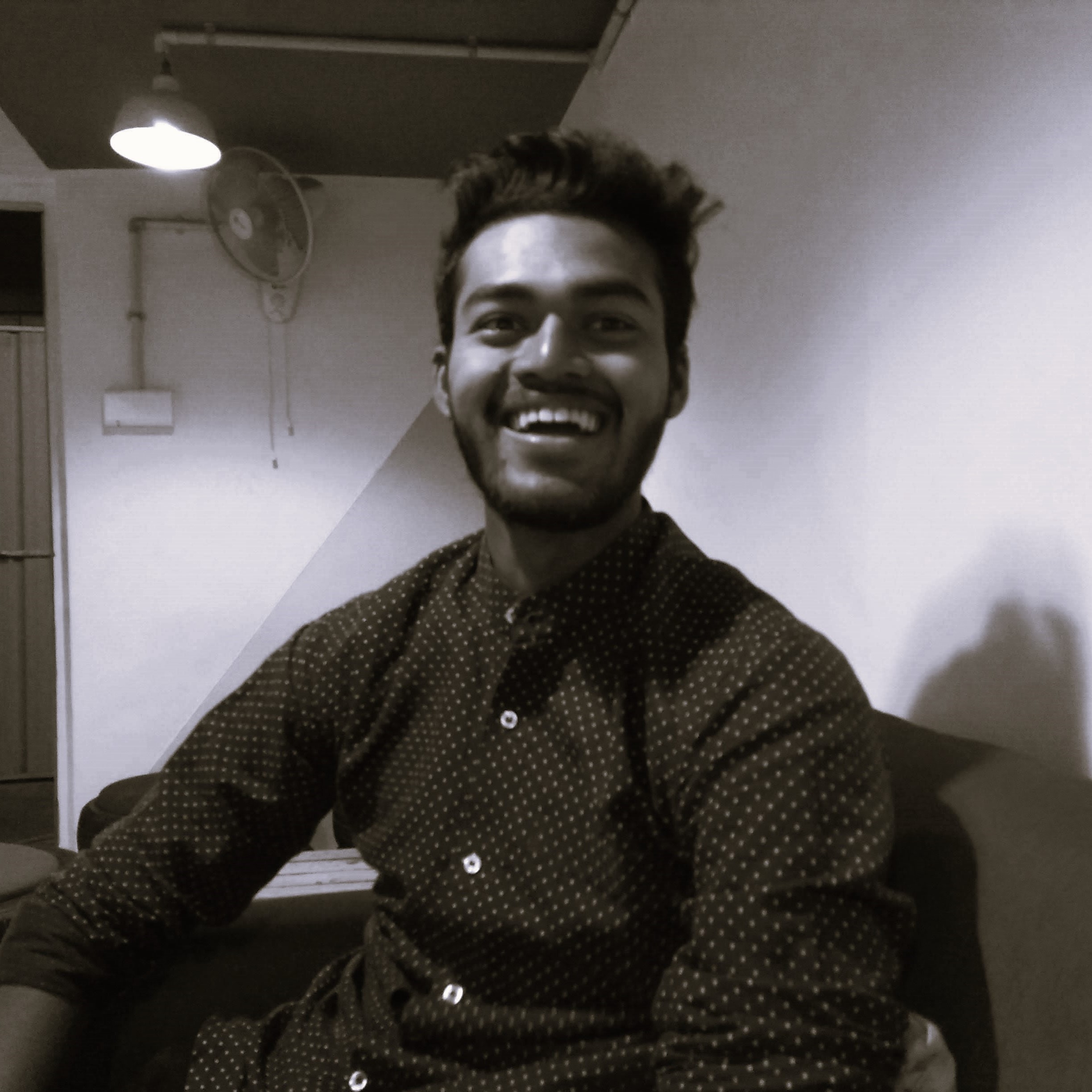
Contributor

